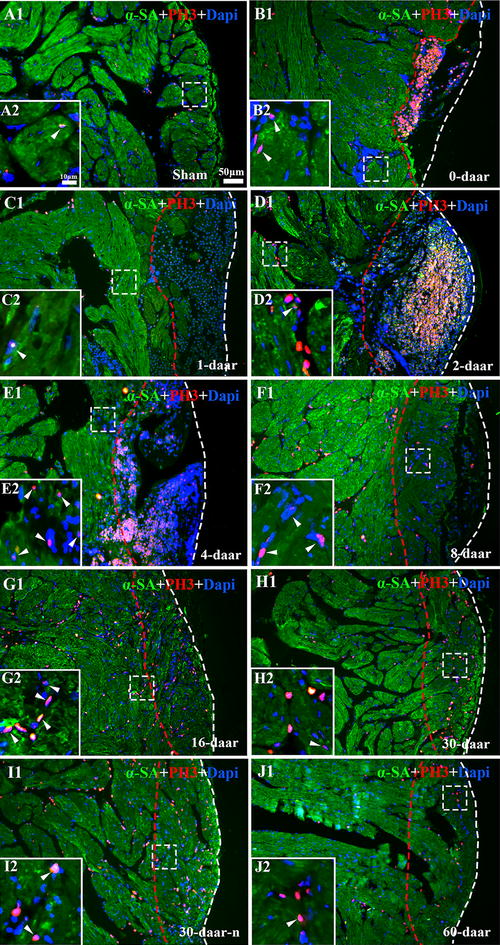Fig. 5.

α-SA/PH3 positive cells exist in the border area of the amputated site and regenerated area. a1 Longitudinal section of the apical area from a sham control. High magnification of the square region is shown (a2). Longitudinal sections of an amputated heart at 0 daar (b1, b2), 1 daar (c1, c2), 2 daar (d1, d2), 4 daar (e1, e2), 8 daar (f1, f2), 16 daar (g1, g2), 30 daar (h1, h2; perfect regeneration), 30 daar (i1, i2; nearly perfect regeneration), and 60 daar (j1; perfect regeneration). The amputated apex was regenerated by newly cardiomyocytes within approximately 30 days after amputation, as demonstrated by the presence of many α-SA+ cardiomyocytes in the regenerated zone (area between the red dotted line and white dotted line). In addition, the density of α-SA+/PH3+ cardiac myocytes in the border area of the regenerated zone at 2–8 daar and in the regenerated zone at 16–30 daar is significantly higher than those in the sham control and in 0–2 daar groups, suggesting that the proliferation of endogenous cardiomyocytes in the border area of the amputated site might be an important mechanism for regeneration of the damaged myocardium. α-SA alpha skeletal muscle actin, PH3 phospho-histone H3, DAPI 4′,6-diamidino-2-phenylindole. White arrow: PH3+ nucleus. White dotted line, outer surface of the epicardium. Area between the red dotted line and white dotted line, regenerated area after amputation. 30-daar-n: amputated heart with nearly perfect regeneration at 30 daar. Bar in a1–j1 = 50 μm. Bar in a2–j2 = 10 μm. Six frogs were inspected for 30 and 60 daar, while three frogs were inspected for other time points respectively
